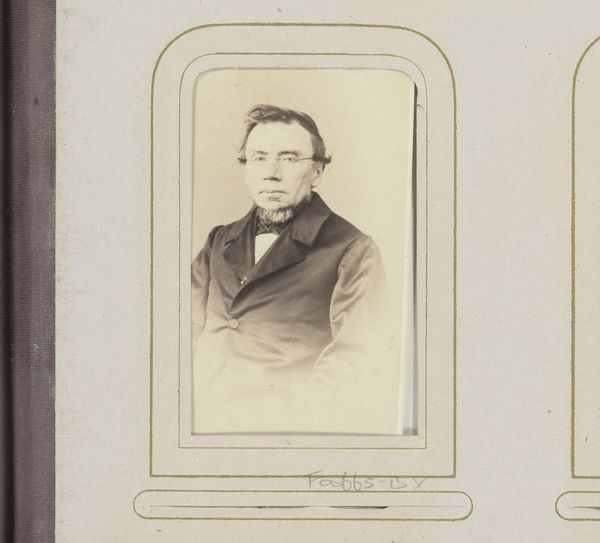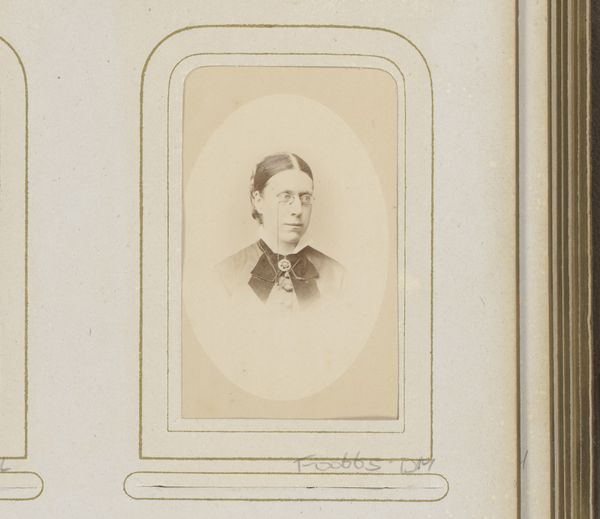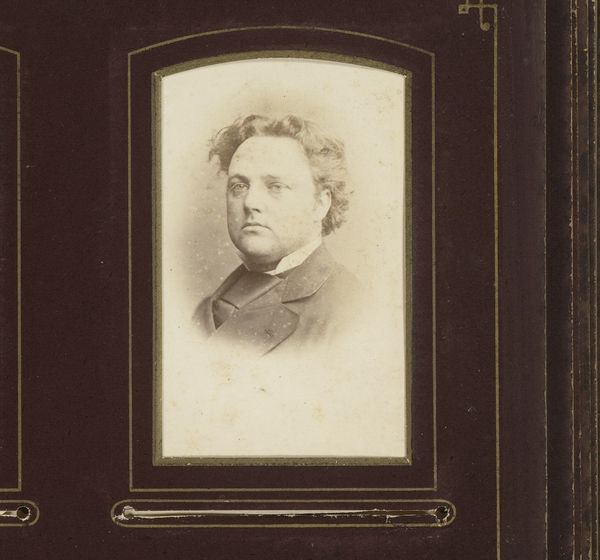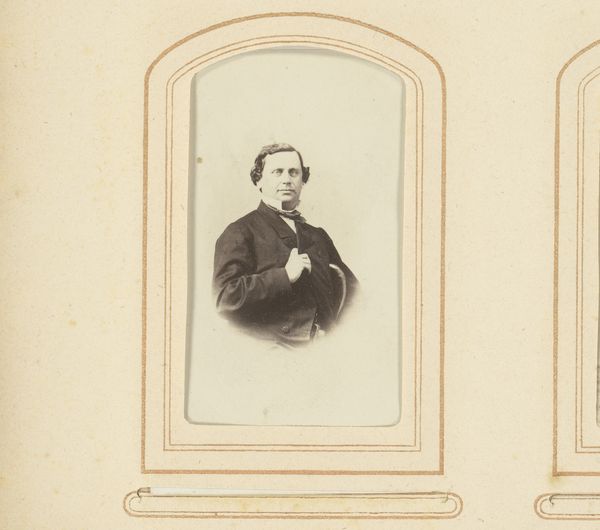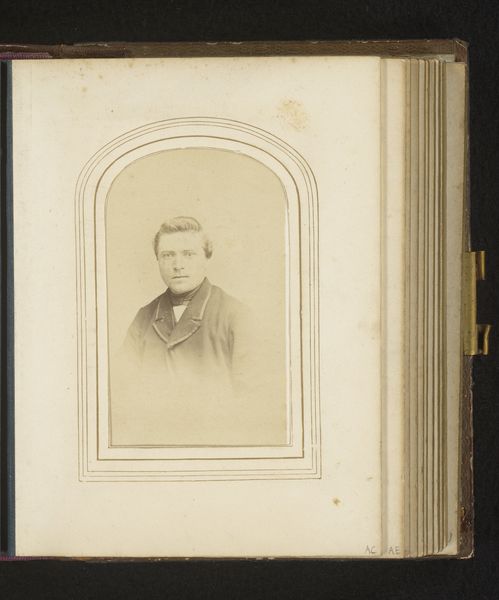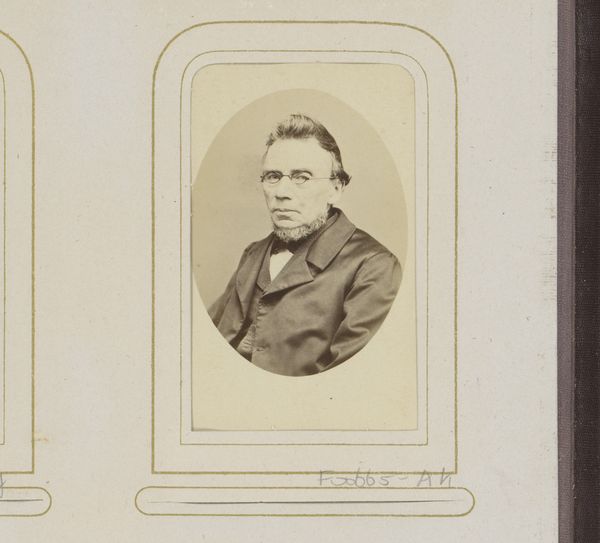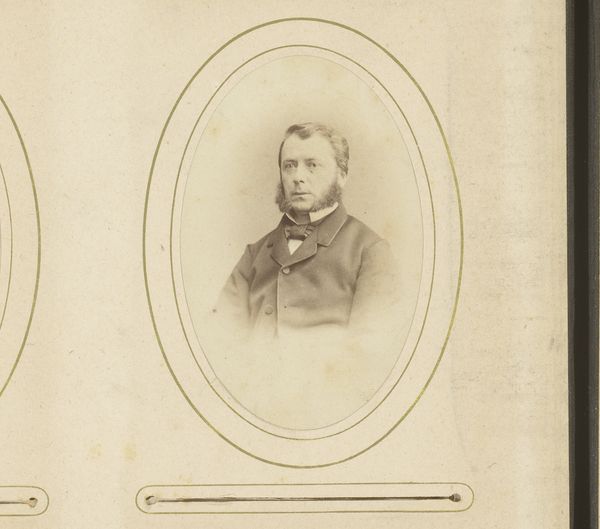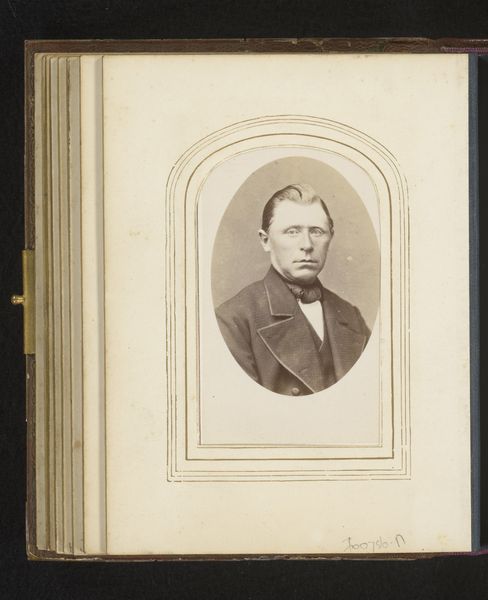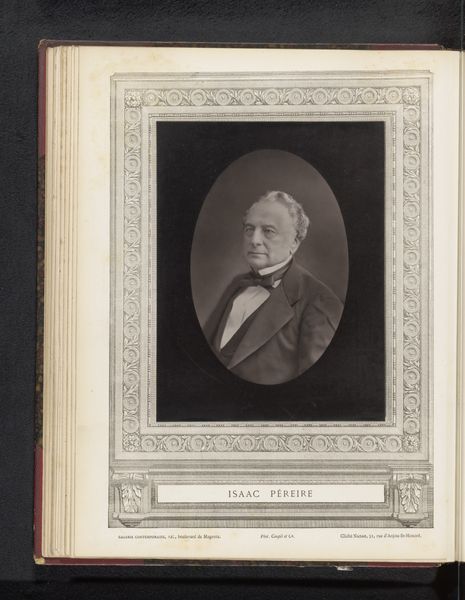
paper, photography, gelatin-silver-print
#
portrait
#
sculpture
#
paper
#
photography
#
gelatin-silver-print
#
19th century
#
watercolor
Dimensions: height 81 mm, width 50 mm
Copyright: Rijks Museum: Open Domain
Editor: So here we have, held at the Rijksmuseum, a gelatin silver print from 1864, 'Portrait of a Man' by Bernardus Bruining. It’s oddly charming, I think. There's an honesty to the subject's gaze... What jumps out at you when you look at this piece? Curator: Well, besides hoping he's off to a grand ball - bowties always hint at hidden dances, don't you think? It whispers to me about the burgeoning middle class and their attempts to mirror aristocratic portraiture. These framed photographs allowed people to hold onto loved ones... they also created tangible reminders of absence, which, for me, makes this photograph all the more emotionally complex. What about the medium, the gelatin-silver print itself? What does that texture evoke for you? Editor: It feels… fragile. Like looking into a memory fading at the edges. Is it typical for photography of this period to evoke that feeling? Curator: In a way. The process itself was so delicate. Imperfections weren't airbrushed away like today. Each print possesses this unique alchemy of light, chemicals, and human touch. It’s like capturing a fleeting thought – the *idea* of a man, suspended in a moment. And tell me, doesn't his slightly startled expression make him so incredibly… relatable? Editor: I think it does! The imperfections and surprise make him human, rather than a godlike figure. Thank you for pointing this out! It’s easy to look at historical pieces as if they’re so far removed from ourselves. Curator: Precisely! That’s the true magic, isn't it? To discover that thread of connection, that shared humanity that binds us across time. Art allows conversations across generations.
Comments
No comments
Be the first to comment and join the conversation on the ultimate creative platform.
